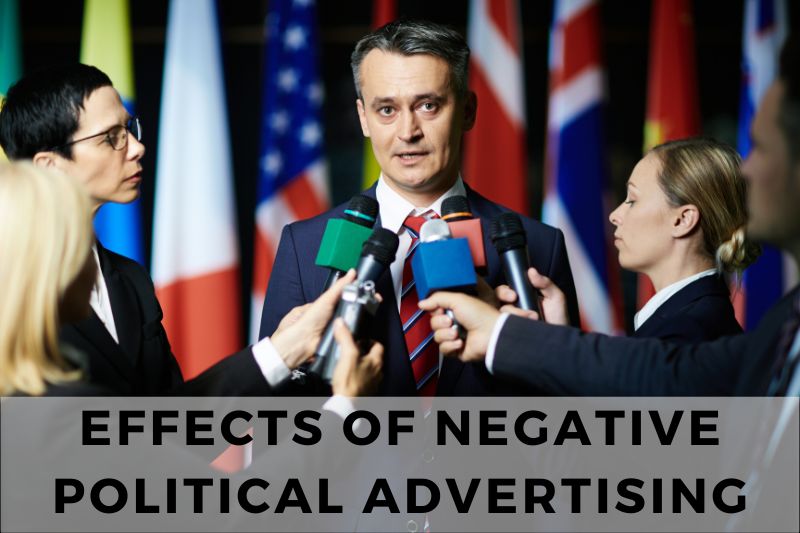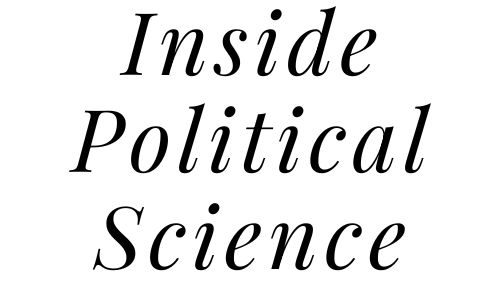
Negative political advertising has become a prominent tool in modern campaigns, often seen as a necessary tactic to sway voters and weaken opponents. However, while the immediate effects are obvious—such as influencing public opinion or shaping election outcomes—the long-term consequences of negative ads are less often discussed.
These side-effects can extend far beyond the intended target, influencing the overall political landscape in ways that are not always predictable or desirable. In this article, we will explore some of the unexpected side-effects of negative political advertising, both on voters and on the broader political system.
What is Negative Political Advertising?
Negative political advertising refers to campaign tactics that focus on attacking or criticizing an opponent, often highlighting their flaws, mistakes, or controversial stances. This type of advertising contrasts with positive campaigns, which typically promote the virtues, policies, and achievements of a candidate. Negative ads can take various forms, including television commercials, social media posts, printed materials, and even debates.
While these ads are often crafted to influence voters’ perceptions, they also play a significant role in shaping the overall political discourse. The effectiveness of negative ads has been the subject of much debate, as their use has grown in frequency over the years, particularly during high-stakes elections. Despite the controversy surrounding them, negative political ads continue to be a central feature of modern political campaigns.
Common Side-Effects of Negative Political Advertising on Voters
Negative political advertising can have a profound impact on voters, often producing unintended consequences that go beyond the intended effects. The following are some of the most common side-effects that arise when negative ads become a central part of political campaigns:
#1. Increased Cynicism
One of the primary side-effects of negative political advertising is an increase in cynicism among voters. When political ads focus on attacking opponents rather than discussing issues, they can foster a sense of distrust toward the entire political system. Voters may start to believe that all politicians, regardless of their party affiliation, are corrupt or manipulative. This perception can lead to voter disengagement, making it harder for candidates to foster positive relationships with the electorate.
#2. Lower Voter Turnout
The constant bombardment of negative political ads can also contribute to lower voter turnout. When voters are exposed to relentless attacks and mudslinging, they may feel disillusioned and discouraged from participating in the election process altogether. The negative atmosphere can create a sense of apathy, where voters feel their vote won’t make a difference or that all candidates are equally bad. This can particularly affect younger voters or those who are less politically engaged.
#3. Polarization
Negative political advertising often exacerbates political polarization, driving deeper wedges between opposing groups. Ads that demonize opponents can foster a us-vs-them mentality, where voters see those who disagree with them not as people with different opinions but as enemies to be defeated. This division can make political discussions more hostile and less productive, contributing to an increasingly fragmented society where cooperation becomes more difficult.
#4. Voter Apathy
Closely related to cynicism, voter apathy arises when individuals feel that political campaigns focus more on personal attacks than on substantive issues. As a result, voters may become disinterested in the election process, seeing it as a series of petty squabbles rather than a meaningful choice between candidates with differing policy platforms. This lack of engagement can reduce the likelihood of informed voting and can further undermine the democratic process.
#5. Shifting Voter Preferences
Negative ads have the potential to influence voter preferences, sometimes in unexpected ways. Rather than leading voters to abandon a candidate they dislike, negative ads can sometimes cause them to rally behind that candidate in a show of defiance. For example, voters who feel the negative ads are unfair may develop a stronger allegiance to the attacked candidate, shifting their vote in the opposite direction of the intended message. This phenomenon is known as the “boomerang effect.”
#6. Focus on Personality Over Policy
Negative political ads often shift the focus from a candidate’s policies and qualifications to their personality, character, or personal flaws. When ads constantly attack an opponent’s demeanor or actions, voters may become more focused on these traits than on the candidate’s actual platform. This can lead to decisions being based more on emotional reactions than on reasoned evaluation of policies, potentially resulting in the election of candidates who may not be the best fit for addressing the issues at hand.
#7. Decreased Trust in Candidates
Another side-effect of negative political ads is a general decrease in trust toward political candidates. When attacks are focused on personal character flaws or past mistakes, voters may begin to see all candidates as untrustworthy. This erosion of trust can have long-lasting consequences, as it diminishes the effectiveness of campaigns to connect with voters on a personal level. It can also make it more difficult for future political campaigns to inspire confidence and motivate voter participation.
#8. Emotional Reactions
Negative ads are designed to provoke strong emotional reactions, whether it’s anger, fear, or disgust. While this tactic may be effective in mobilizing certain segments of the electorate, it can also have detrimental effects. Emotional responses often override logical decision-making, leading voters to make decisions based on fear or outrage rather than a balanced consideration of the facts. In the long run, this emotional manipulation can skew the political discourse, making it more difficult for rational debate to take place.
#9. Negative Framing of Political Debate
When political campaigns focus on negative messaging, they frame the entire political debate in terms of personal attacks and conflict rather than policy discussions. This focus on negativity can set the tone for the entire election cycle, pushing voters to engage more in reactive than in proactive political dialogue. As a result, the overall quality of political debate suffers, and important issues may be overshadowed by trivial arguments and distractions.
#10. Strengthening of Party Loyalty
Interestingly, negative political ads can sometimes strengthen party loyalty rather than weaken it. When voters see their party being attacked, they may rally around their candidate or party leader as a form of defense. Negative ads can act as a catalyst for party unity, with voters feeling compelled to support their candidate simply to oppose the attacks made by the opposing side. This effect can reinforce existing party lines and reduce the likelihood of voters considering candidates from different parties.
#11. Undermining Democracy
Ultimately, one of the most concerning side-effects of negative political advertising is its potential to undermine the democratic process. By focusing on personal attacks and sensationalism rather than substantive policy discussion, negative ads can discourage voters from making informed decisions. This results in a less educated electorate and a political system where choices are made based on superficial considerations rather than on the merits of candidates and their policies. In the long run, this degradation of democracy can weaken the foundation of the political system itself.
How Negative Political Advertising Impacts the Opposition’s Campaign
Negative political advertising doesn’t just affect the targeted voters; it can also significantly influence the opposition’s campaign strategy. The focus of these attacks shifts the dynamics of the political race, often requiring the opposing candidate to adapt and respond to the new political environment. Below are some of the key impacts negative ads have on the opposing campaign.
#1. Erosion of Candidate Image
One of the most direct impacts of negative political advertising on the opposition’s campaign is the erosion of the targeted candidate’s public image. Constant negative ads may paint a portrait of the candidate as untrustworthy, incompetent, or even corrupt. This creates a challenging environment for the candidate to repair or rebuild their reputation, forcing them to respond defensively rather than focusing on their policy positions. Over time, this undermines the candidate’s ability to connect with voters and erodes their credibility.
#2. Shift in Campaign Strategy
Negative ads require the opposition to alter their campaign strategy, often shifting from promoting their own positive attributes to defending themselves against attacks. This defensive shift can divert resources, time, and energy away from discussing issues that matter most to voters. Campaign teams may have to invest heavily in damage control, crafting responses, rebuttals, or counter-attacks rather than presenting their own vision. This diversion of focus reduces the campaign’s ability to engage voters on a deep, substantive level.
#3. Increased Media Attention
Negative political ads often generate significant media attention. Media outlets, eager for stories that will attract attention, are likely to cover the controversial ads and their impacts. While this increased attention can amplify the message, it may also shift the media focus away from important policy discussions and toward the sensational aspects of the campaign. This can further complicate the opposition’s campaign, as their message is often overshadowed by the media’s fixation on scandal and conflict.
#4. Heightened Voter Engagement
Negative ads can also lead to heightened voter engagement, both positive and negative. On one hand, negative ads can provoke strong reactions from voters, causing them to become more engaged in the political process, especially if they feel strongly about the issues being discussed. On the other hand, heightened engagement can also be harmful to the opposition’s campaign if it mobilizes voters who are primarily reacting emotionally to negative attacks. This emotional mobilization can sometimes work in the favor of the attacking candidate.
#5. Risk of Backlash
Negative political ads often come with the risk of a backlash, especially if voters perceive them as overly aggressive, misleading, or unjustified. If the attacks seem untruthful or if the public feels that the ads are excessively personal, the opposition may gain sympathy from voters. The backlash can lead to an increased support for the targeted candidate, with voters rallying against what they perceive to be unfair treatment. This “boomerang effect” can turn a seemingly effective negative ad campaign into a liability for the candidate responsible for the attacks.
#6. Increased Costs
The use of negative political ads typically results in higher costs for the attacking candidate’s campaign. Negative ads require extensive research, high-quality production, and a broad distribution strategy to maximize impact. This financial investment is often significant and can divert funds from other areas of the campaign, such as grassroots organizing or voter outreach. In some cases, the financial strain from running a negative campaign can weaken a candidate’s ability to fund other essential parts of their electoral effort.
#7. Focus on Attacks Over Issues
Negative political ads often lead to a shift in focus from important policy issues to personal attacks. As the opposition spends more time responding to attacks, they may inadvertently get caught up in a cycle of negative campaigning rather than advancing their own ideas. This focus on attack ads reduces the overall quality of political discourse, as debates become more about personalities and scandals than about solutions to the country’s pressing problems. It also risks alienating voters who are looking for thoughtful, issue-oriented discussions.
Conclusion
Negative political advertising can have significant short-term effects, but its long-term consequences are often harmful. It can foster cynicism, lower voter turnout, and deepen polarization, all while shifting focus from policy to personal attacks. While these ads may momentarily damage an opponent’s campaign, they also risk backfiring, leading to voter backlash or heightened costs.
For voters, negative ads often lead to emotional reactions and disengagement, while for candidates, they divert attention from important issues. Ultimately, the unintended side-effects of negative advertising may undermine democracy by prioritizing conflict over meaningful political discourse.
